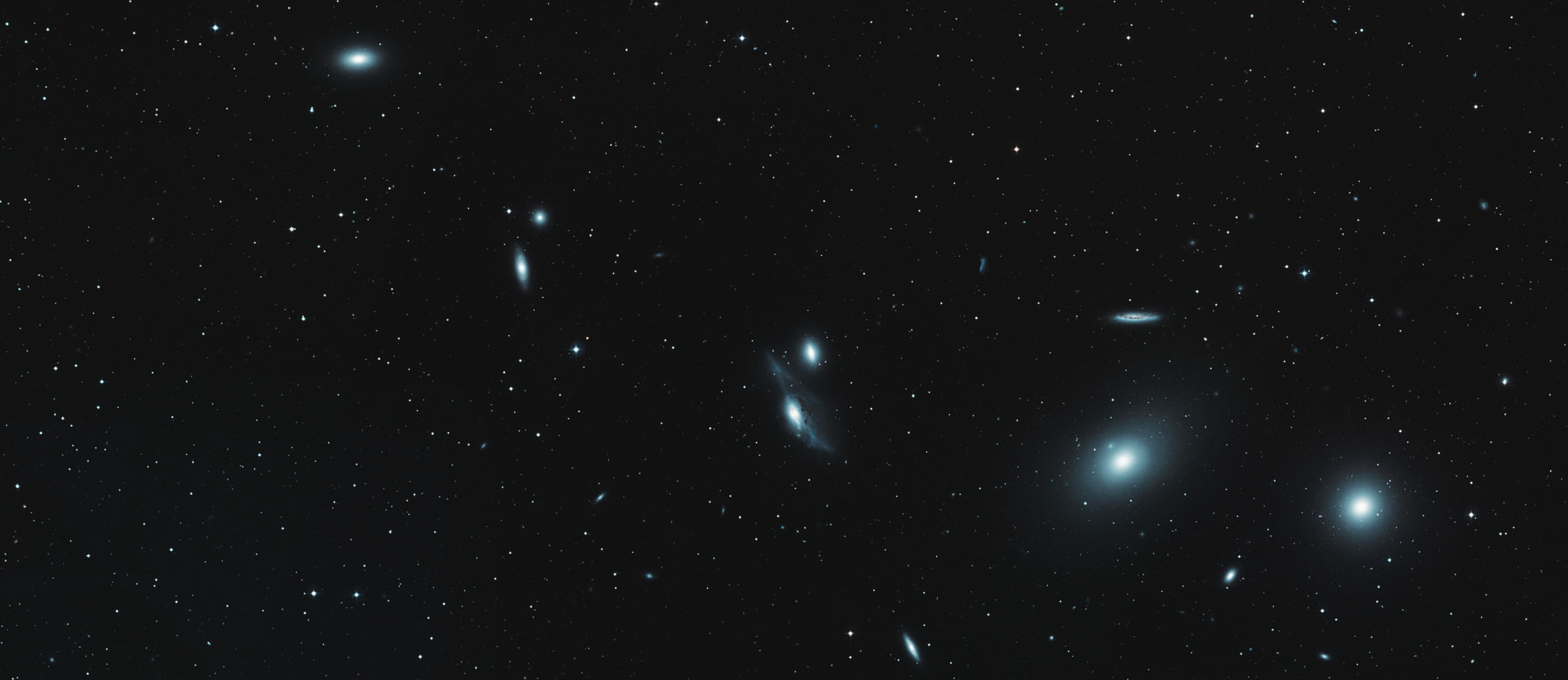Galaxies Beyond the Stars
By Alan Hale
Mars and Jupiter remain visible in our evening skies during May. Jupiter is already fairly low in the west as darkness falls. Early in the month, it sets just more than an hour after the end of dusk. By month’s end, it sets before twilight is over, and we won’t be seeing it again until it emerges into our morning sky during the latter part of July.
Mars, meanwhile, is fading now that it is pulling away from its closest approach to Earth back in January, but it remains easily visible until setting an hour or so after midnight.
The brilliant Venus and the dimmer Saturn form a close pair as they rise around the beginning of dawn in early May. As the month progresses, the two worlds gradually pull apart and Saturn climbs higher into the east, but they remain a dramatic sight together. Adding to the spectacle, the crescent moon passes through the region on the mornings of May 22–23.
The Eta Aquarid meteor shower, one of the stronger showers in May, peaks in the early-morning hours of May 5–6. With the moon just past its first quarter phase, skies should be relatively dark. Viewers may see up to 20 meteors per hour. In the Southern Hemisphere, where the radiant is higher in the sky, the rate could reach 40 to 50 meteors per hour.
The Eta Aquarids are debris from Halley’s Comet, which last appeared in 1986 and just passed through aphelion—its farthest point from the sun—a little more than a year ago. It comes our way again in 2061.
You may notice there aren’t as many bright stars in our May evening skies as there are at other times of the year. During May, we are looking out away from our galaxy into intergalactic space. While there are fewer stars in this direction with the naked eye, telescopes allow you to see a large number of other galaxies.
The nearest large cluster of galaxies is in the constellation of Virgo—just south of overhead during the mid-evening hours—and is some 55 million light-years away from us. The Virgo galaxy cluster contains more than a thousand galaxies, a few hundred of which are detectable with small to moderate-size backyard telescopes.


